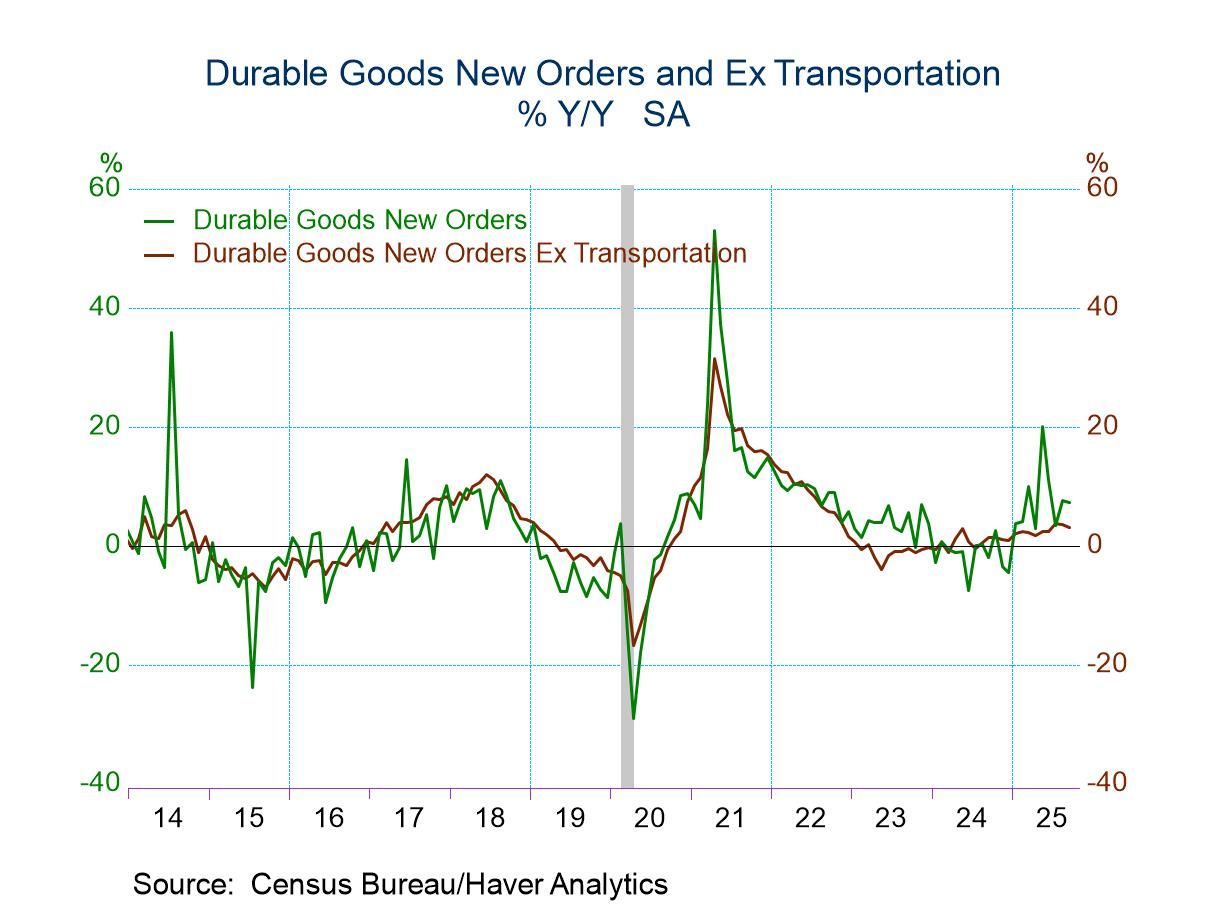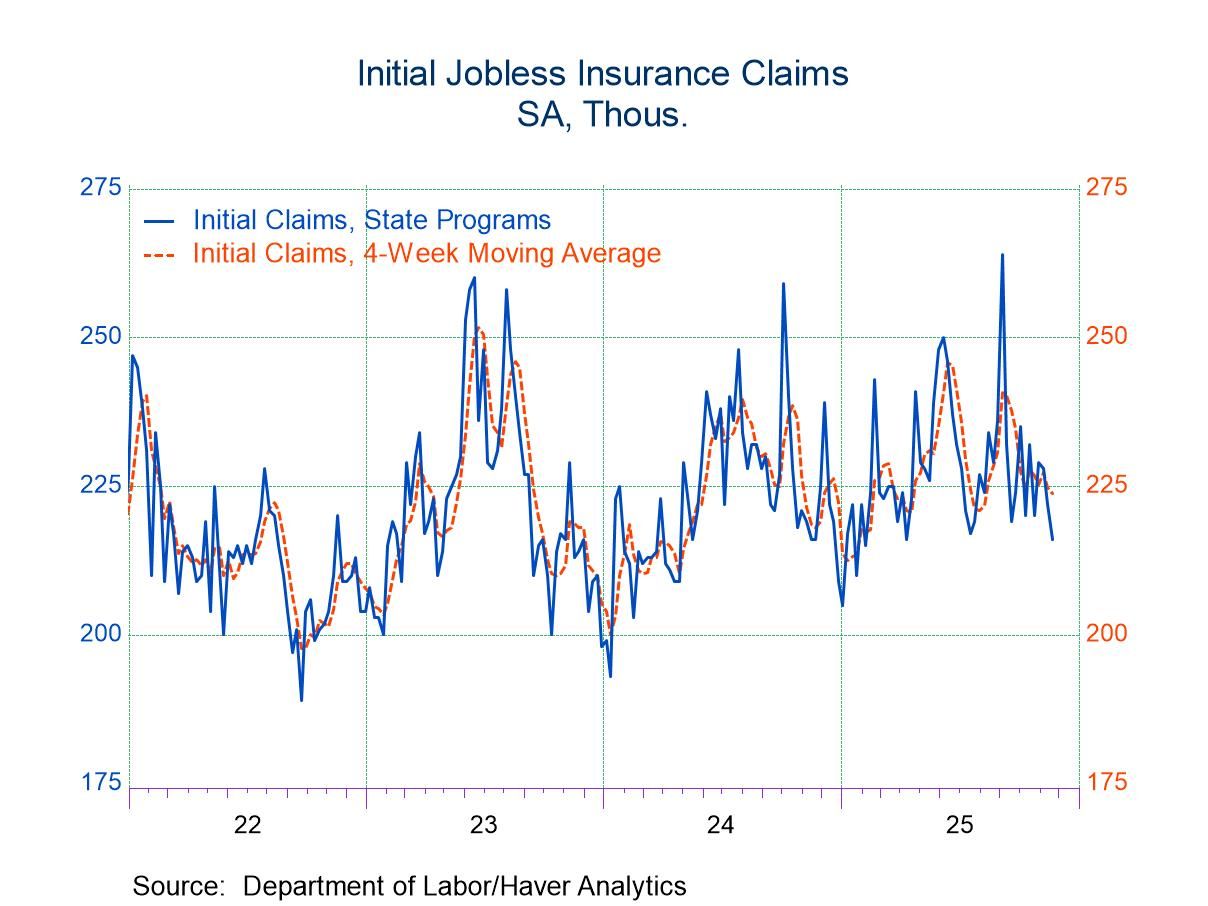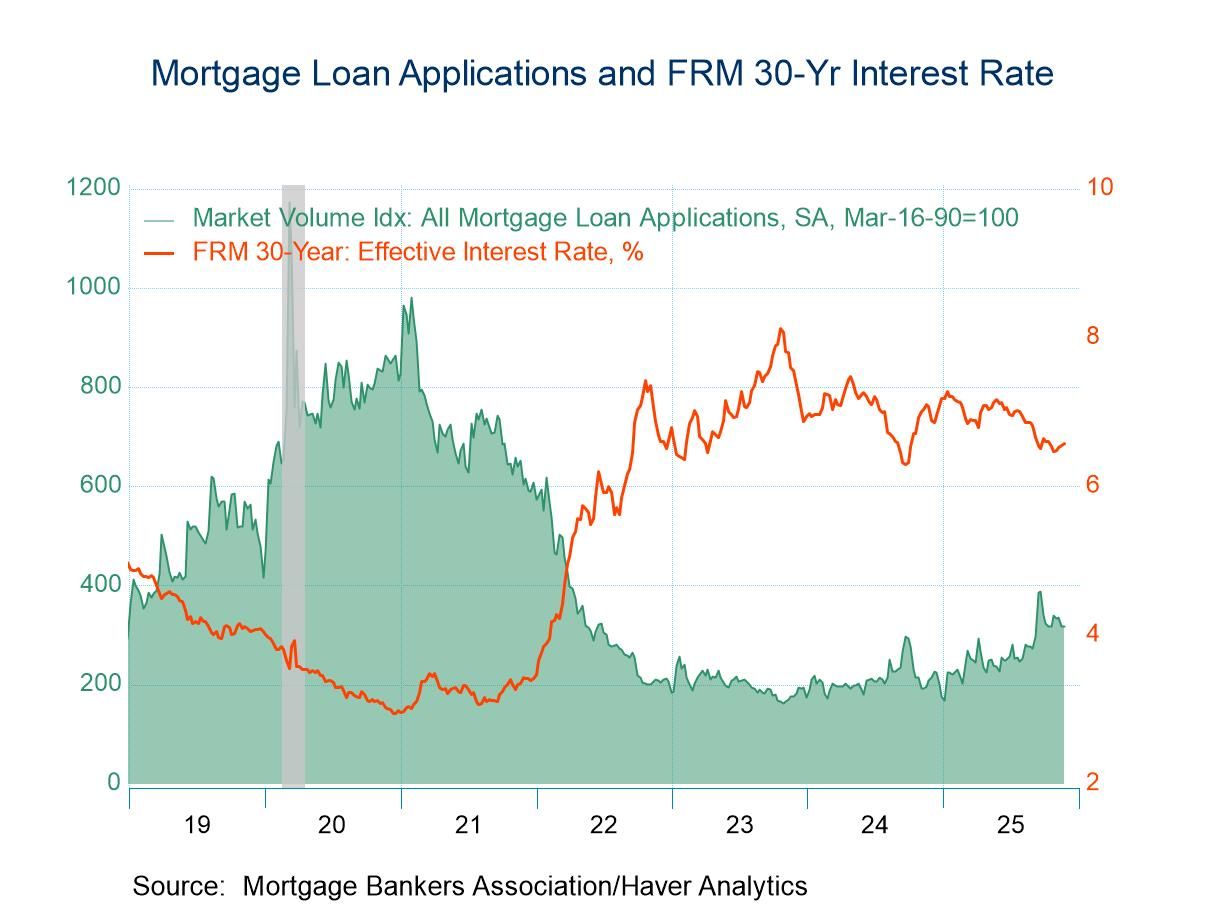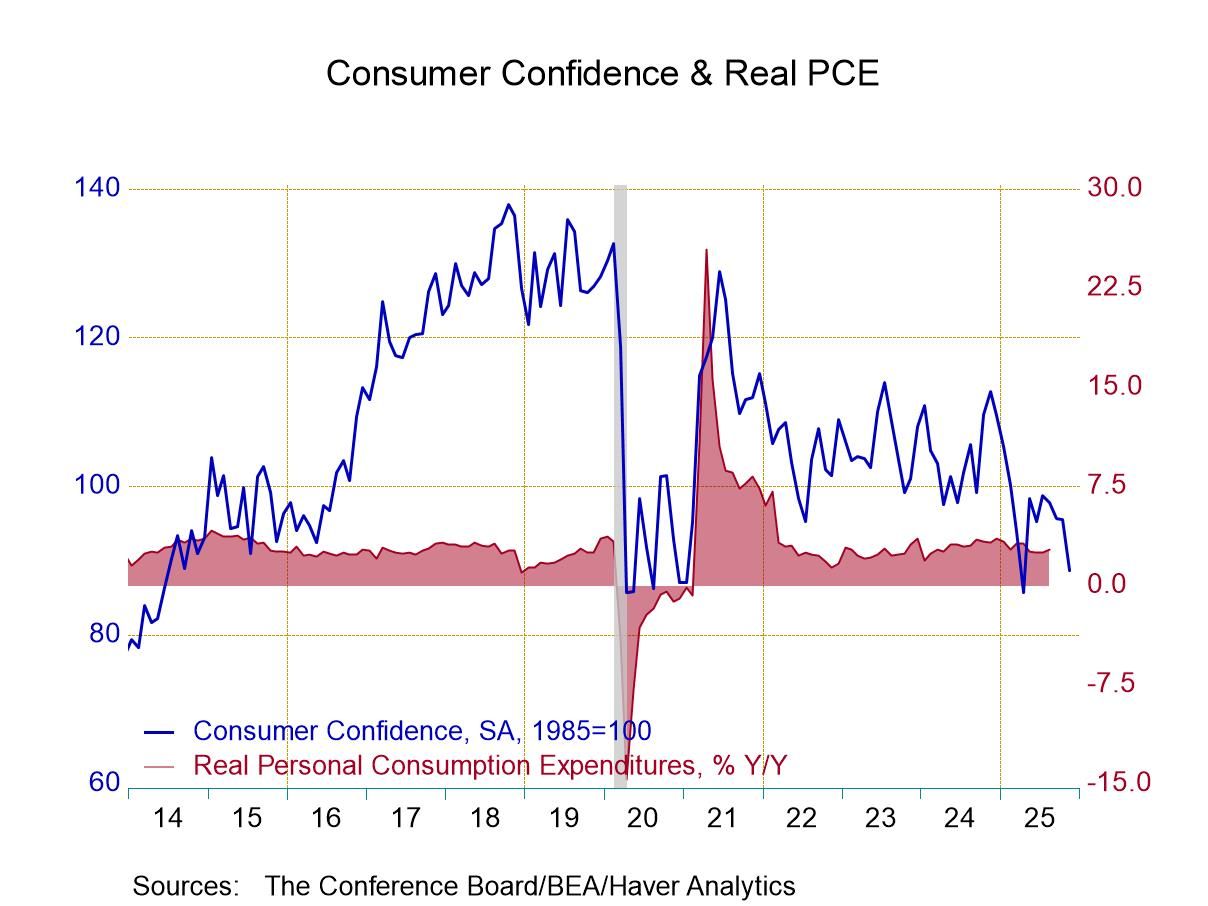U.S. Consumer Price Index Strengthens in June
by:Tom Moeller
|in:Economy in Brief
Summary
- Monthly increase is highest in five months. Core gain moves up minimally.
- Energy costs post solid increase.
- Both core goods and core services prices move higher.


The Consumer Price Index rose 0.3% in June after rising 0.1% in May and increasing 0.2% in April. A 0.3% rise had been expected in the Action Economics Forecast Survey. The 2.7% y/y increase in the headline CPI in June compared to 2.4% in May and remained below the 9.1% peak in June 2022. The CPI excluding food & energy increased 0.2% last month after a 0.1% uptick in May and a 0.2% April gain. A 0.3% rise had been expected. The 2.9% y/y June rise compared to 2.8% in May, still well below the 6.6% peak in September 2022.
Energy prices rose 0.9% (-0.8% y/y) last month after falling 1.0% in May. Gasoline prices strengthened 1.0% (-8.3% y/y) after falling 2.6% in May. Fuel oil prices rose 1.3% (-4.7% y/y) after rising 0.9% in April. Natural gas prices rose 0.5% (14.2% y/y) following a 1.0% decline, and electricity prices gained 1.0% (5.8% y/y) after rising 0.9% in May.
Food prices rose 0.3% in June (3.0% y/y) for the second consecutive month. Egg prices fell 7.4% (+27.3% y/y), the third straight month of sharp decline. Meat, poultry & fish prices rose 0.8% (+4.1% y/y) after easing 0.1%, while dairy product prices declined 0.3% (0.9% y/y) after easing 0.1% in May. Cereal & bakery product costs eased 0.2% (0.9% y/y) after a 1.1% increase while fruit & vegetable prices rose 0.9% (0.7% y/y), following a 0.3% gain. Nonalcoholic beverage prices strengthened 1.4% (4.4% y/y) in June after falling 0.3% in May.
Goods prices less food and energy rose 0.2 (0.7% y/y) in June after holding steady in May. Prices of used cars and trucks fell 0.7% (+2.8% y/y) last month, after falling 0.5% in May, while new vehicle costs weakened 0.3% (+0.2% y/y) for the second consecutive month. Apparel prices rose 0.4% in June (-0.5% y/y) and reversed the prior month’s 0.4% decline. Appliance prices surged 1.9% (0.8% y/y), after increasing 0.8%. Home furnishings prices jumped 1.0% (1.7% y/y) after rising 0.3%. Recreation product costs rose 0.8% (-0.8% y/y) in May, doubling the May increase. Education & communication product costs held steady last month (-3.3% y/y) after rising 0.1% in May. Medical care goods prices rose 0.1% (NSA, 0.2% y/y) after increasing 0.6% in May.
Services prices less energy moved up 0.3% (3.6% y/y) last month following a 0.2% May gain. Shelter prices rose 0.2% (3.8% y/y) last month after two months of 0.3% increase as owners’ equivalent rent of primary residences increased 0.3% (4.2% y/y), the same as in May. The cost of lodging away from home declined 2.9% (-2.5% y/y), the fourth straight month of decline. Rents of primary residences gained 0.2% (3.8% y/y), the same as in May. Transportation service prices moved up 0.2% (3.4% y/y) after easing 0.2% as the cost of motor vehicle insurance edged up 0.1% (6.1% y/y) in June after strengthening 0.7% in May. Public transportation costs increased 0.4% (-2.7% y/y) after falling 2.5% during May. The cost of medical services increased 0.6% (3.4% y/y) after a 0.2% increase, and the cost of recreation services rose 0.2% (3.8% y/y) after slipping 0.1% in May. Education & communication services prices rose 0.1% (1.1% y/y) for the second consecutive month.
The Consumer Price figures can be found in Haver's USECON database. The expectations figure is contained in the AS1REPNA database.
The Economic Implications of Tariff Increases from the Federal Reserve Bank of San Francisco can be found here.


Tom Moeller
AuthorMore in Author Profile »Prior to joining Haver Analytics in 2000, Mr. Moeller worked as the Economist at Chancellor Capital Management from 1985 to 1999. There, he developed comprehensive economic forecasts and interpreted economic data for equity and fixed income portfolio managers. Also at Chancellor, Mr. Moeller worked as an equity analyst and was responsible for researching and rating companies in the economically sensitive automobile and housing industries for investment in Chancellor’s equity portfolio. Prior to joining Chancellor, Mr. Moeller was an Economist at Citibank from 1979 to 1984. He also analyzed pricing behavior in the metals industry for the Council on Wage and Price Stability in Washington, D.C. In 1999, Mr. Moeller received the award for most accurate forecast from the Forecasters' Club of New York. From 1990 to 1992 he was President of the New York Association for Business Economists. Mr. Moeller earned an M.B.A. in Finance from Fordham University, where he graduated in 1987. He holds a Bachelor of Arts in Economics from George Washington University.






